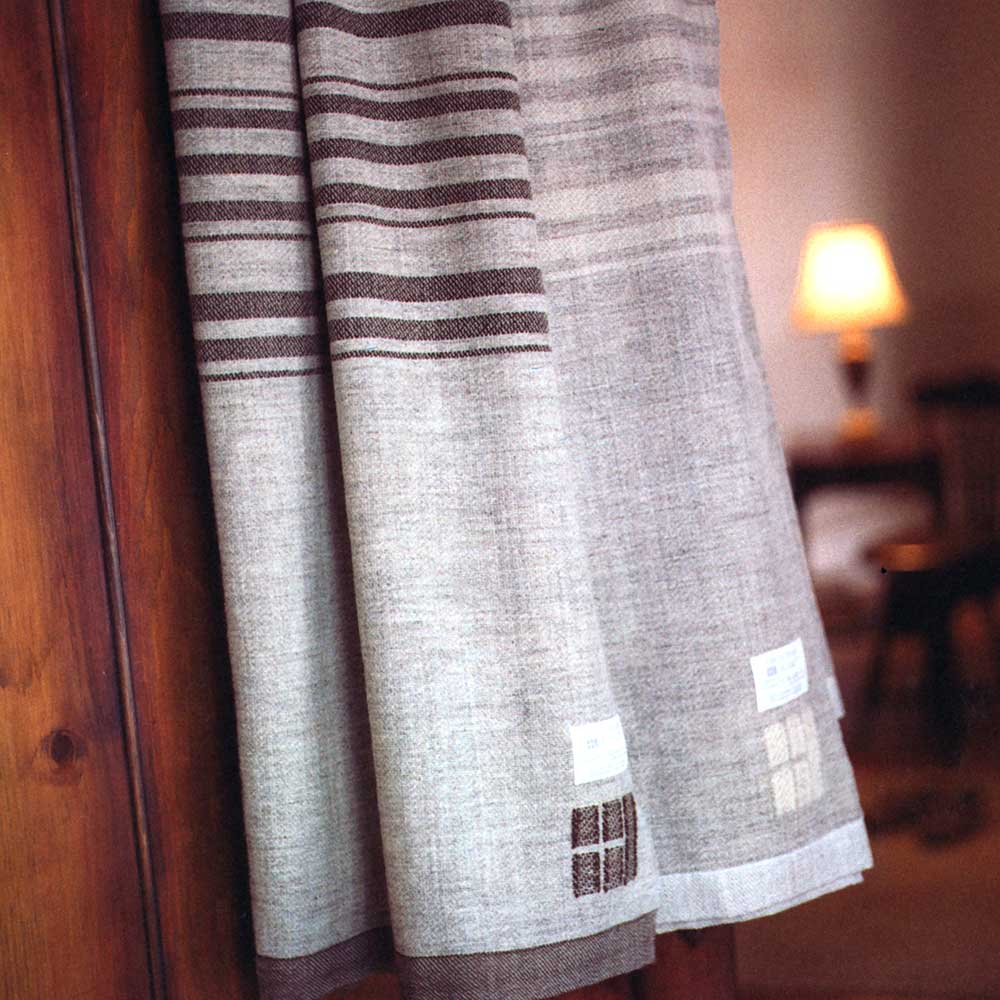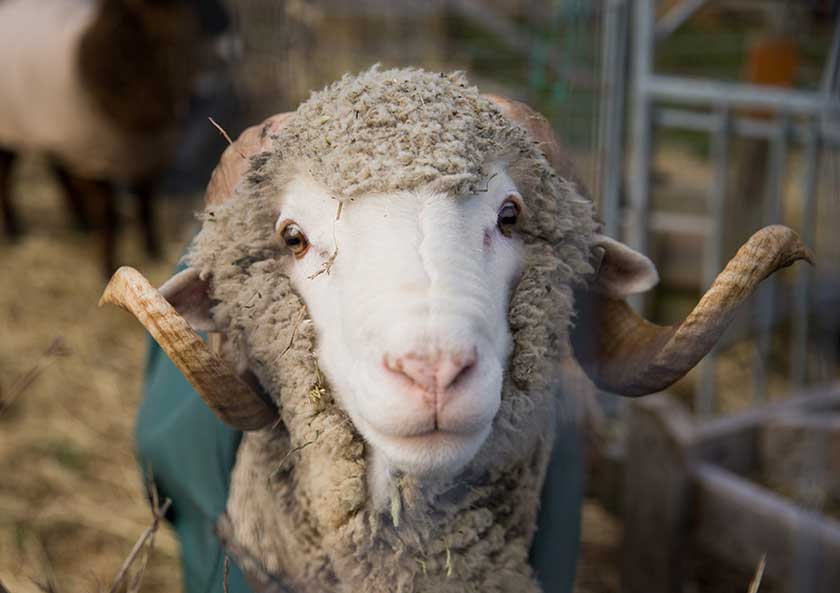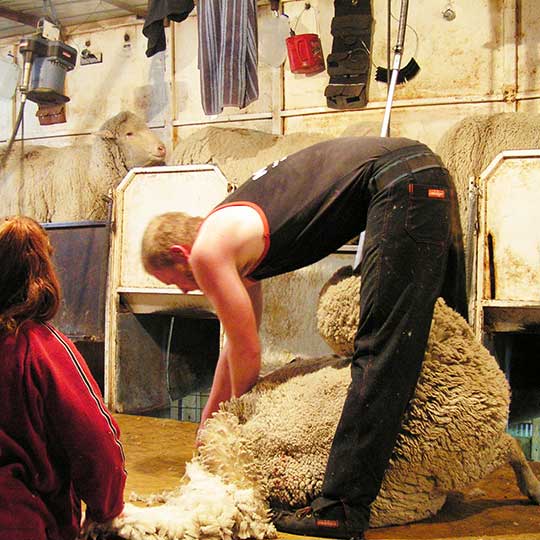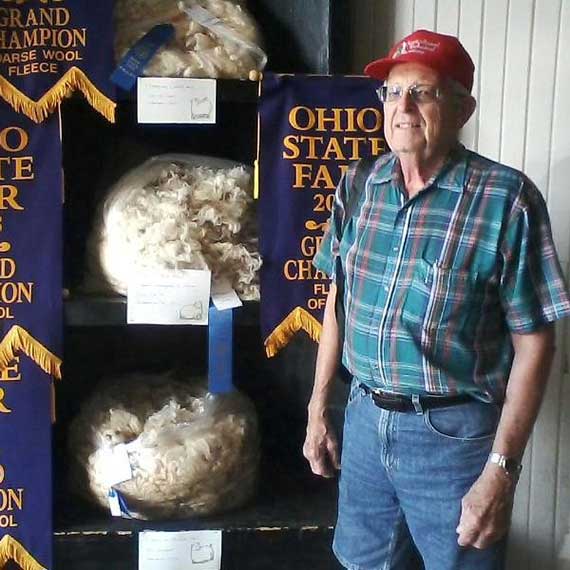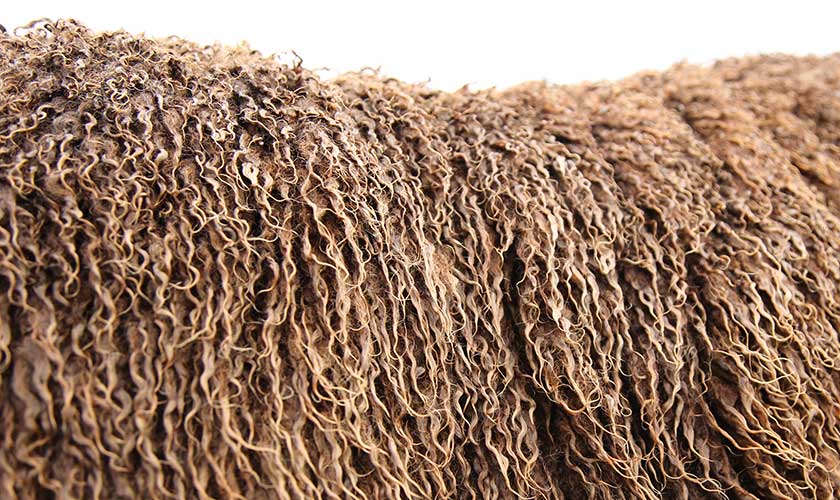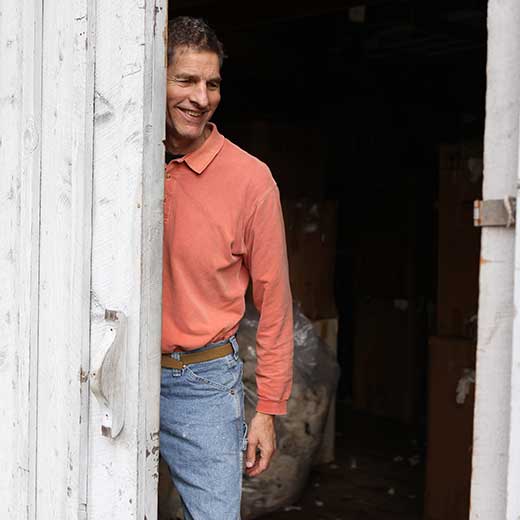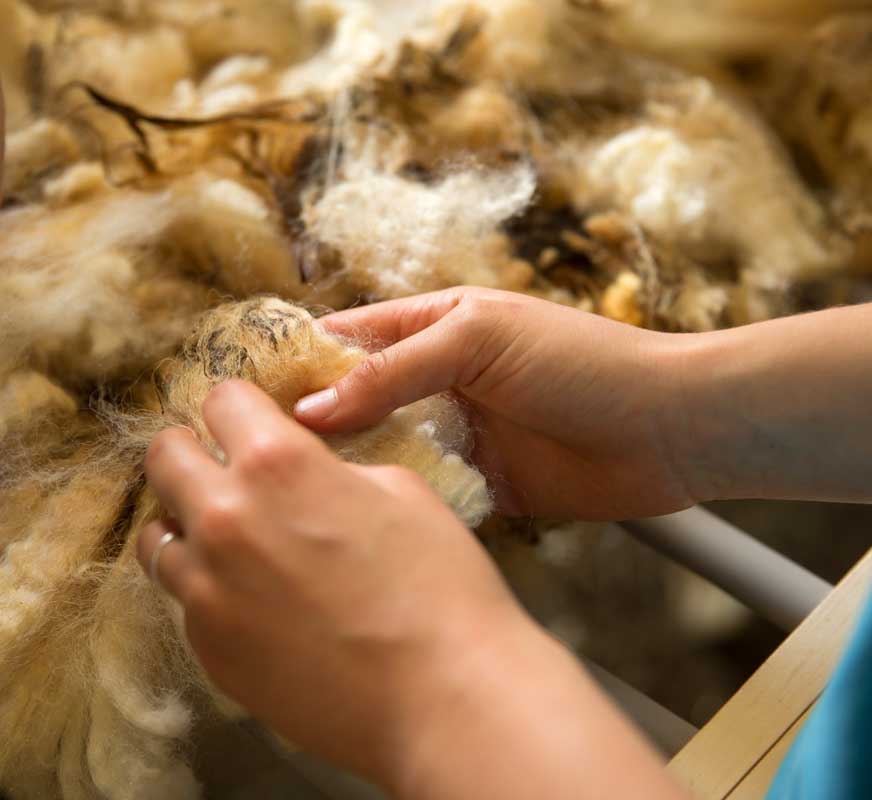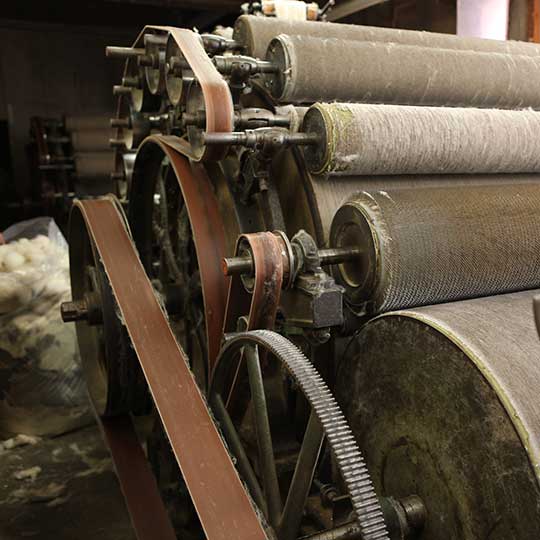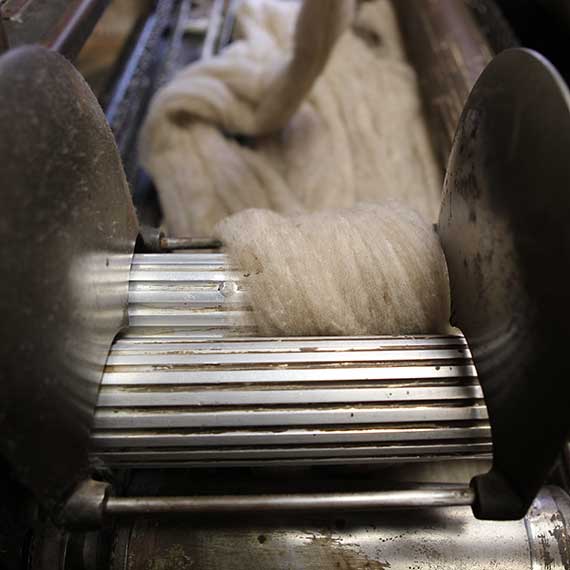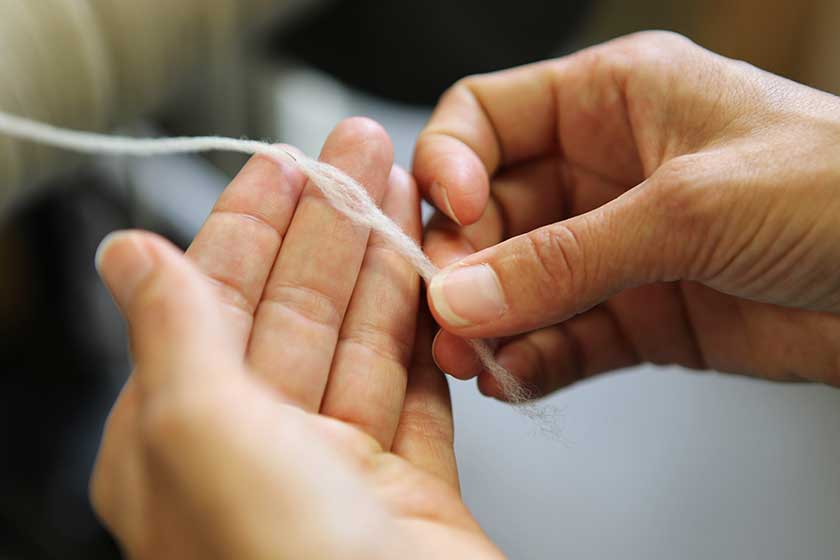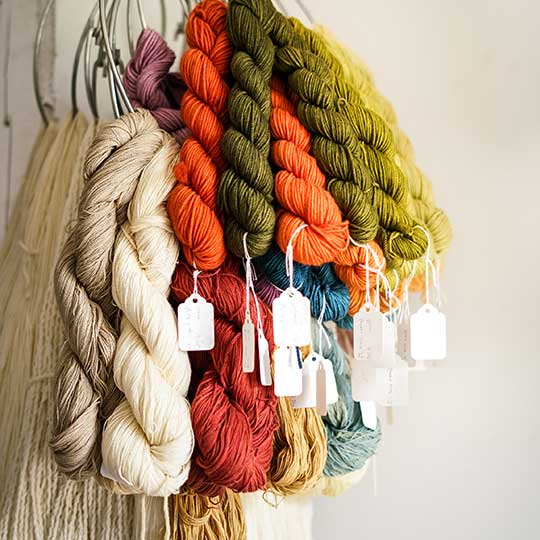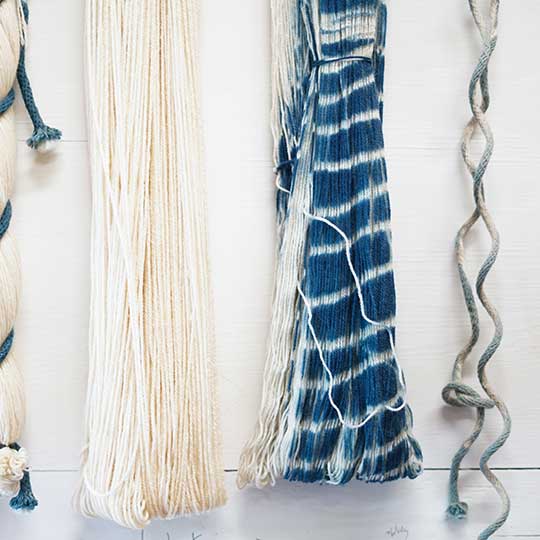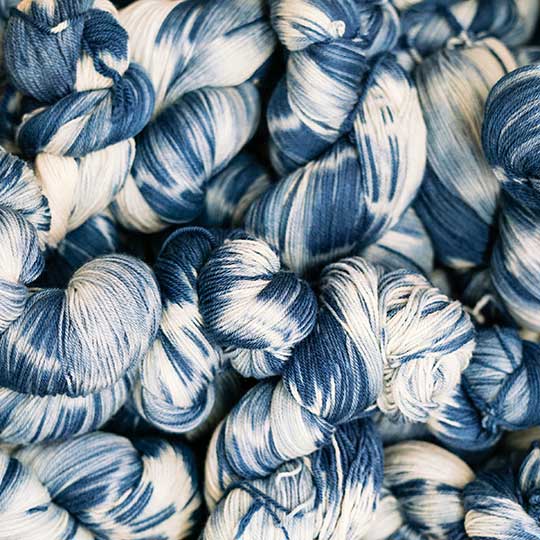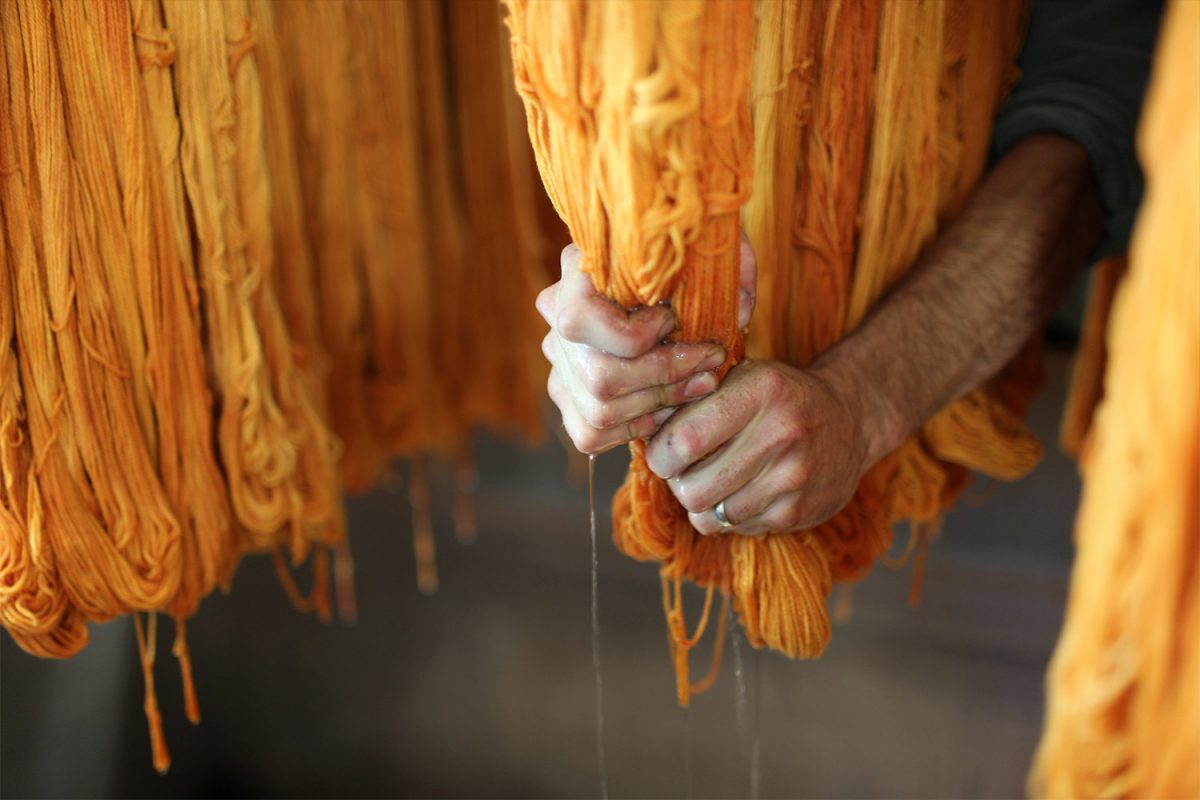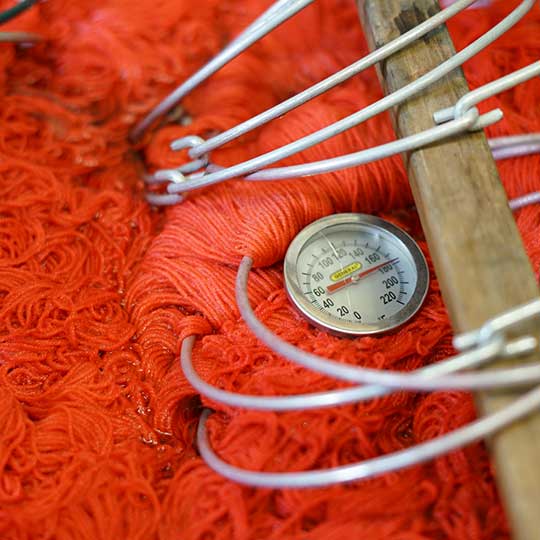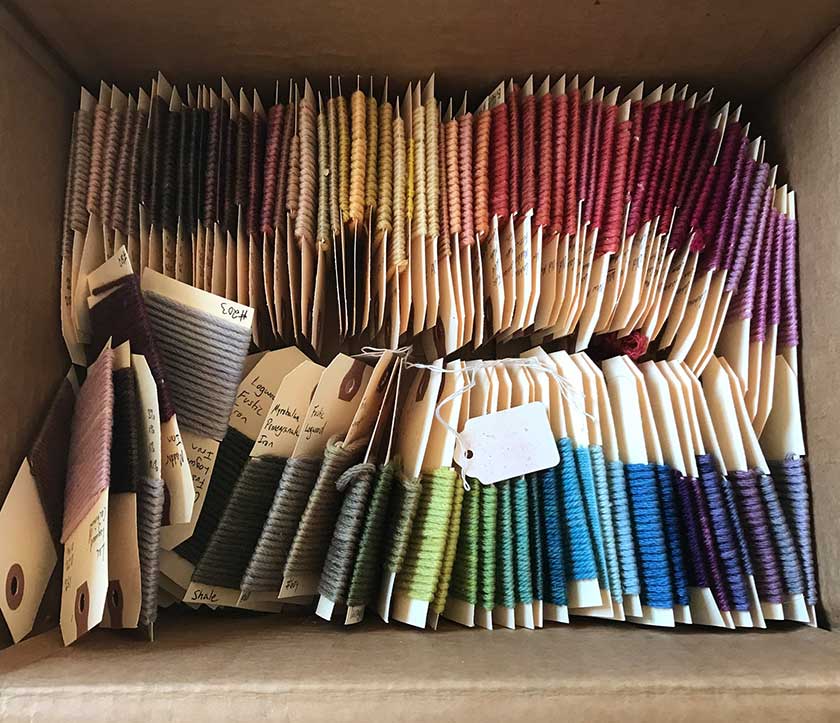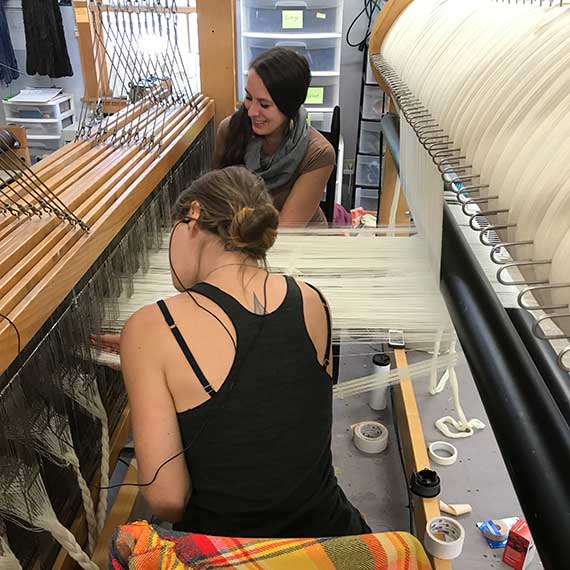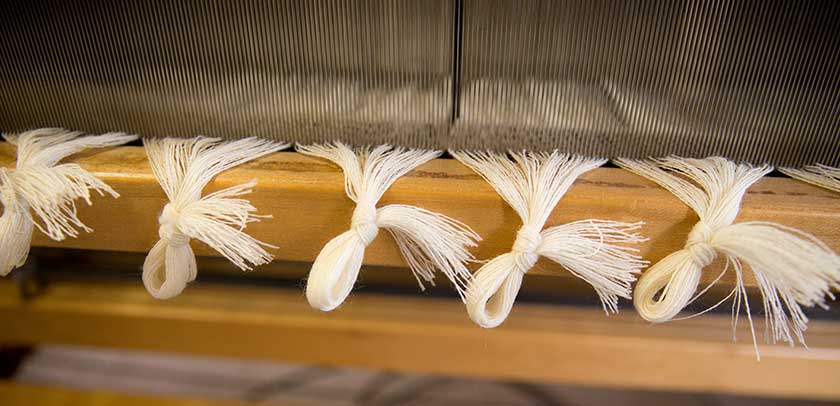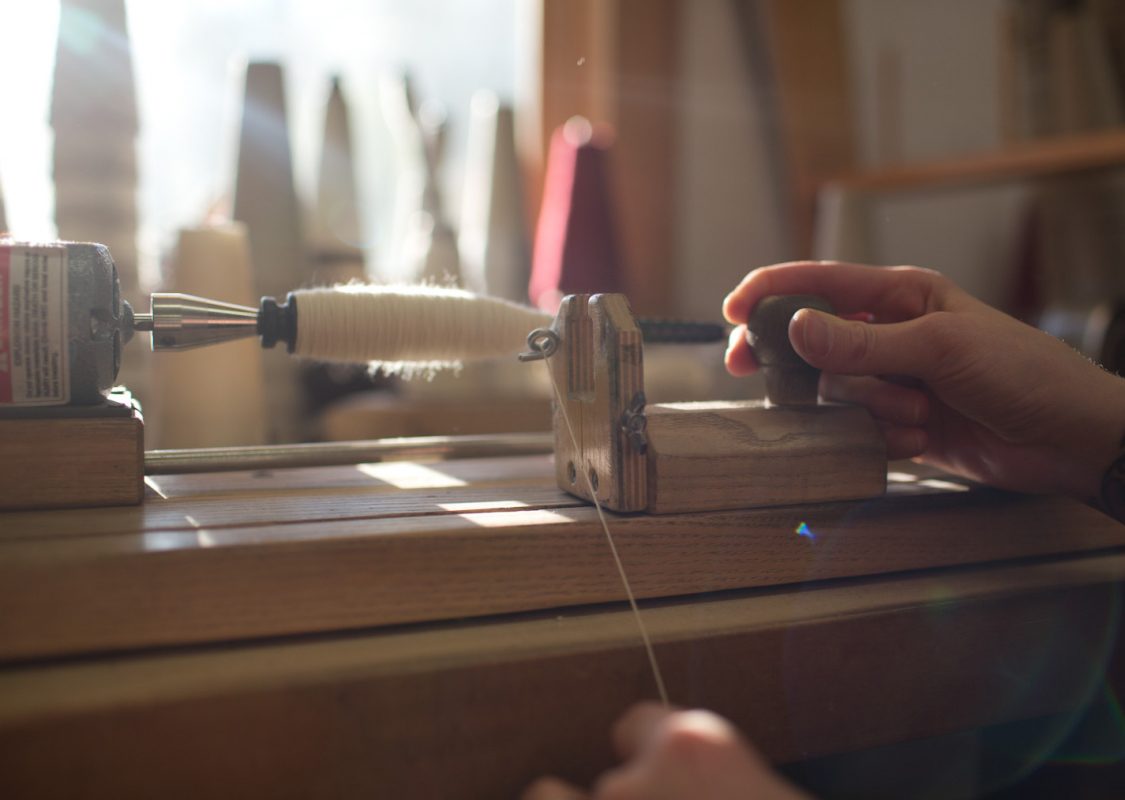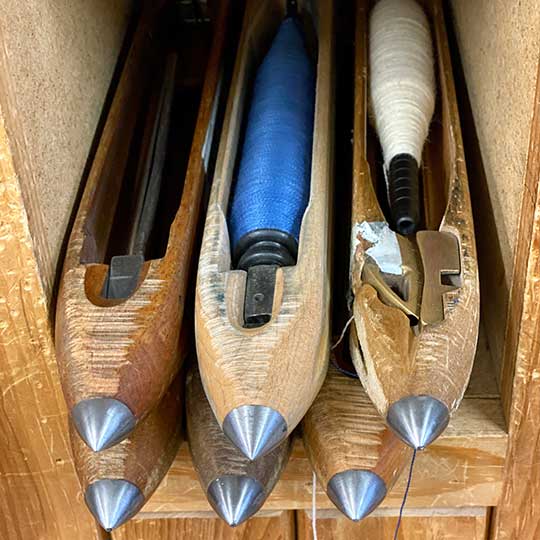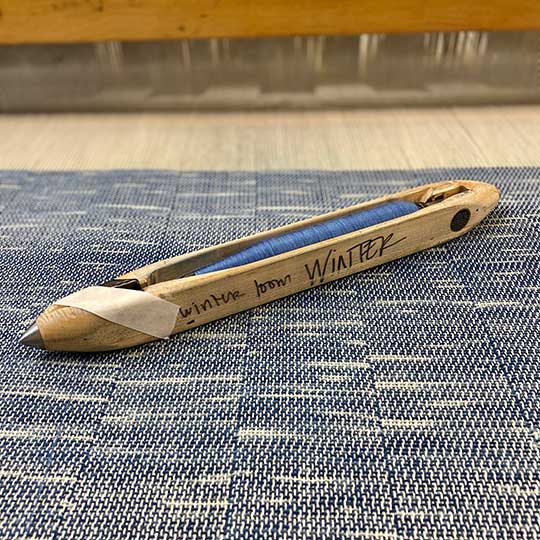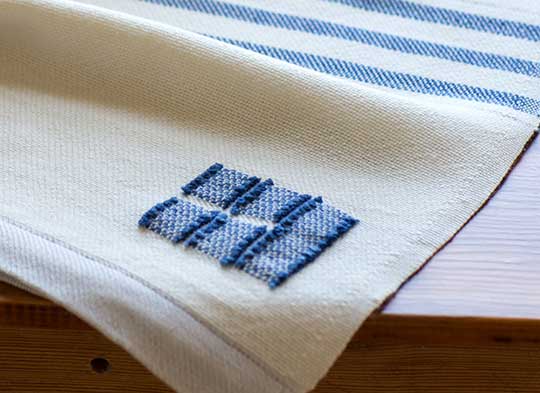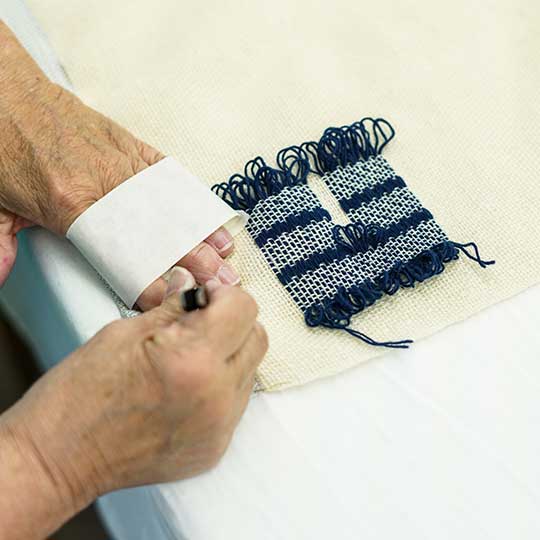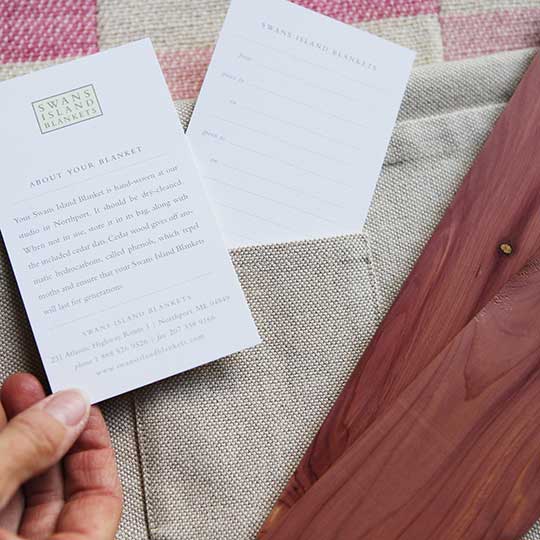Behind the Scenes, in the studio
A Blanket’s Journey from Farm to Finish
A lot goes into making a Swans Island Blanket, starting with a commitment to an idea. In 1973 E.F. Schumacher wrote what turned out to be a very influential book, Small is Beautiful. It inspired many businesses, including Swans Island with quotes such as, “Wisdom demands a new orientation of science and technology toward the organic, the elegant and beautiful.” This rather concisely articulates the approach we have taken to our business since its founding in 1992.
To follow such an approach in our modern economy is no simple task. One must commit to a set of principles and then stay the course while also evolving and all the while meeting payroll and paying taxes. So, how do you start? Well….in our case we start with fleece. Such a simple thing for a company that makes products out of wool, and yet in our times, not so simple.
The first product we made thirty years ago was a summer weight wool blanket, inspired by vintage blanket designs. We still make the same product now, among many products, indistinguishable from that early successful attempt.
“One must commit to a set of principles and then stay the course, while also evolving.”
Step 1: Source breed-specific wool from small family farms.
It starts with fleece from the Corriedale breed, an old cross between Lincoln and Merino breeds, possessing perfect characteristics in crimp, length and fineness for the weaving of blankets. We obtain fleeces from the two family farms in Ohio and Pennsylvania that we have worked with for thirty years. Those farmers produce healthy, clean fleeces, which is essential for the right feel and look in the finished blanket. The fleece is shorn once a year in the spring, then bagged up and and then sent along to the next step in the chain: scouring and spinning.
Step 2: Send the wool to small New England spinneries who turn our raw fleece into yarn.
Bags of lanolin soaked fleece arrive at Green Mountain Spinnery, a small employee-owned business in Putney Vermont, founded on the same “Small is Beautiful” principles as ourselves. They scour the fleece in organic soap, leaving just the right amount of lanolin, the naturally occurring oil that gives wool its longevity and feel.
Working on antique spinning frames they produce an unplied, “singles” yarn for us. The singles imparts a lofty, spongy quality to the yarn. Green Mountain employs the woolen system of spinning. This ensures that the yarn will efficiently wick moisture away from one’s body while producing a small amount of heat—mother nature’s little chemical reaction that gives wool a major boost over other natural fibers. We are now ready to create a product out of our sustainably sourced, simple, but not so simply created, wool yarn.
Step 3: Dye our custom-made yarns in our own dyehouse.
When the wool arrives at our Northport farmhouse, our dyer Tony gets his hands on the yarn that will have color added to it. There are many methods for adding color to yarn. We employ the most labor intensive method because it creates the most beautiful color and in our opinion, the best yarn.
We have our own dyehouse attached to the Northport farmhouse. Using pure Maine well water, we fill the dye tanks, then slowly heat the water with gas burners, creating our dye bath. The yarn is carefully lowered into the small tank. Tony hand-manipulates the yarn while controlling for temperature, intensity of color concentration, quality of well water (did it rain last night?) and other alchemical vagaries that make up the ancient craft of the dyer. The secret of creating great color is to adhere to the following:
- Do no harm to the the yarn or to the environment
- Allow the right amount of time for the color to deeply penetrate
- Don’t compress the yarn in the dye process—it leads to dull instead of lofty results
We use all natural dyes as well as low impact synthetic dyes—both of which create different color qualities. After the dyed yarns are rinsed and dried, we are finally ready to begin the weaving part of making a summerweight blanket.
Step 4: Warp the loom
This means setting up the long lengths of yarn that will be the basis of the woven cloth yet to come. Our skilled artisan weavers hand tie between 2,304 and 3,456 knots connecting the new with the old warp yarn.
Step 5: Tension the warp.
The weavers then hand tension the new warp yarn such that it will have even tension across its 90” width. Uneven tension leads to an unbalanced finished product, something we strive to avoid.
Step 6: Prepare the weft yarn.
Wind the weft yarns into bobbins. The bobbins are smaller spools of the yarn that will go over and under the warp yarns to fill the blanket. The bobbins are put into shuttles, which are like tiny canoes that traverse back and forth across the warp yarns.
Step 7: Weave the blanket.
Using a foot pedal, the weaver sends the shuttle with the weft yarn, both dyed and undyed, across the beam inter-mixing with the vertical (warp) yarn. After each trip the shuttle makes, the weaver then beats the yarn into place ensuring that the vertical and horizontal yarns are snugly sitting against each other. In every blanket, this happens approximately 1,500 times! All the while, the weaver must be checking the edges (selvedges) to make sure they are straight and even, looking for and repairing yarn breaks, following the correct pattern and ensuring that the loom is operating correctly. It takes a skilled weaver about eight hours to weave a queen-sized blanket.

Step 8: Add the weaver’s mark
The Swans Island weaver’s mark is hand-placed into the cloth as it progresses . Like a seal or stamp of authenticity this mark is the symbol of a handwoven Swans Island blanket. It can only be placed in by hand and cannot be replicated by large industrial looms.

Step 9: Remove the woven cloth from the loom.
Once woven, the blanket is cut off from the loom. Its left and right edges are already formed thus no stitching is required. While most commercially produced blankets sew on a separate binding cloth along the top and bottom edges, here at Swans Island, we weave in silk threads at the beginning and end of the product. This is another distinction that sets apart a Signature Swans Island handwoven product—100% Mulberry silk is woven right into the blanket itself. This gets stitched over in our finishing room to create a strong and attractive binding.
Step 10: Inspect and remove the chaff from the woven cloth by hand.
Remember those sheep that provided their fleece at the beginning of this process? Whatever chaff, the vegetative matter from the farm, that did not get scoured out at the spinnery must now be picked out with surgical tweezers. This painstaking process can take up to three hours of labor. Most commercially produced wool yarns are put through an acid bath in order to burn out these remaining bits of vegetation. We feel that this harsh chemical process lowers the quality and the wonderful natural properties of the wool that we want to maintain and impart into our finished blankets.
Step 11: Wash, dry and package each blanket.
After we soak, spin out the excess water and block out the blanket on old lace curtain stretchers, it is ready for final inspection and pressing. Each blanket is lovingly folded and placed into a linen bag with its aromatic cedar planks (natural moth protection). We stitch the bags right here in our finishing room.
Each linen blanket bag has a small pocket where we place a provenance card—a simple card for you to write down your name and the date you received or gave this blanket to its recipient. This tradition is carried forward from earlier days when blankets were time-consuming to make and harder to come by. A blanket was a valuable and important part of a home, often given as a cherished wedding gift to couples starting out on life’s journey together.
Step 12: From farm to finish . . . to your family.
From farm to finish, Swans Island is deeply involved in every step of the supply chain. Our process is fully transparent. We know the farmers, spinners, dyers , weavers and finishers that make each and every Signature Handwoven blanket. And now you know too! We hope that knowing all that has gone into making your blanket will help you to enjoy it that much more every time you use it.



